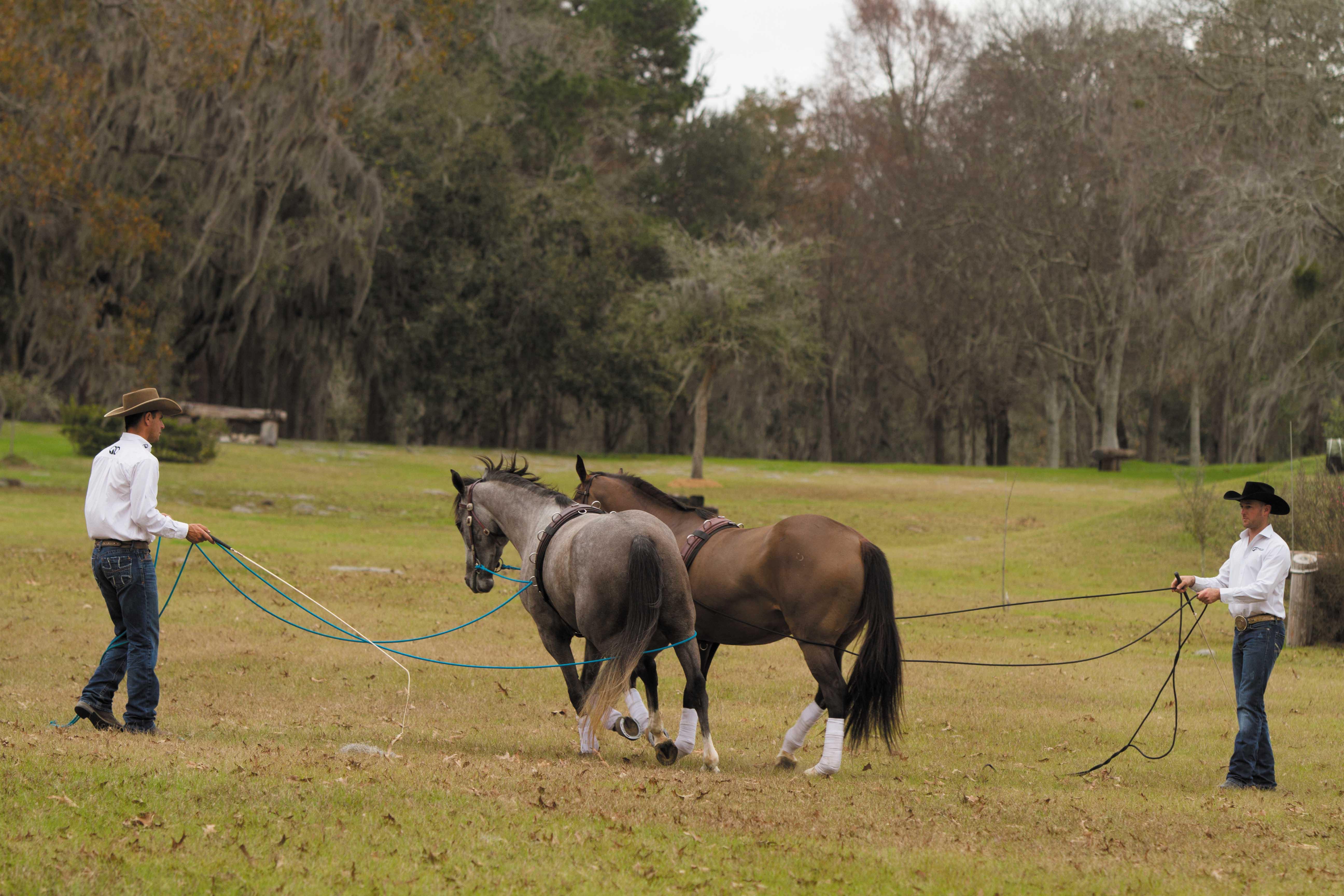
Stand By Me: Long-Reining Basics
In this excerpt from the book Long-Reining with Double Dan Horsemanship, renowned entertainers and clinicians Dan James and Dan Steers explain one of the first steps in making long-reining a fundamental part of your training program.
In our long-reining clinics, we are often asked where the handler should stand. It is a good general idea to stay a horse-length away when you’re not engaged in a specific long-reining exercise that requires you to be closer.
We should also cover more specific guidelines to help you begin long-reining. To do this, we need to briefly discuss the concept of the drive line. Every horse, indeed every prey animal, has an individual drive line. This imaginary line is that point of balance where if you step in front of it, the horse stops or changes direction, and if you are behind it, he moves forward.
With a horse, the drive line falls from the withers down to just behind the elbows: coincidentally, right where the roller and its cinch are positioned. When positioned behind the roller, you will keep the horse driving forward—a key to successful long-reining. Step in front of this line toward the horse’s head, and he will slow or change direction away from you.
Think of it this way: any part of the horse behind the roller acts as a gas pedal when pressured, reinforcing forward motion; anything in front is the brake. The reins are your steering wheel to choose the new direction. Experience will teach you how to quickly step from one position to another in relation to the line to influence how your horse moves. We can categorize your position as it relates to the drive line to help you understand where you want to be, when.
Standing Positions
Let’s discuss three positions that you will use with long-reining. They follow the drive-line principle. First is where you stand once you get your horse moving:
For simple two-reined tracking, you are pushing your horse forward while you follow along in the more traditional driving stance directly behind your horse.
When your horse is doing circles around you, for example in a more traditional lungeing scenario or for canter work, you often stand in the center position—that is, to the side of the horse, lined up just behind the roller. Note that this does change as you and your horse advance—you will begin to use the ¾ position for circles, and then vary between center and ¾ as necessary.
What’s the ¾ position? It is halfway between the first two positions and often used for lateral movements and changes of direction. Also, if you need to approach your horse—say to give his rump a pat for a job well done, for example—this is the angle you use to do so. From this position off the hip, you can see three of your horse’s legs when he’s standing still and square; the far front leg will be hidden behind the near hind leg.
This excerpt from Long-Reining with Double Dan Horsemanship by Dan James and Dan Steers, is reprinted with permission from Trafalgar Square Books (www.horseandriderbooks.com).








Leave a Comment